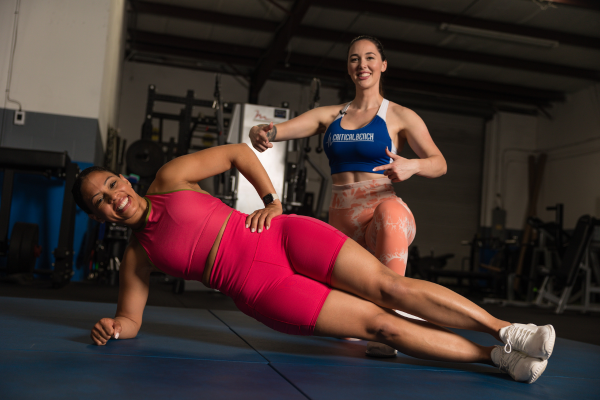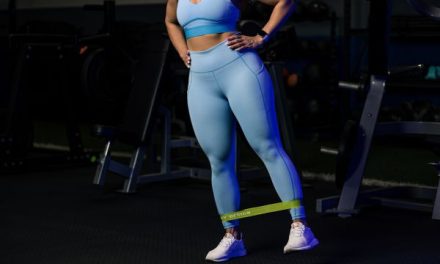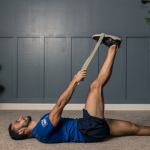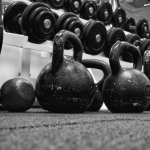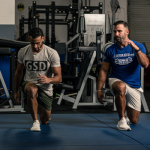Most gym-goers are convinced that real muscle growth only comes from lifting heavy iron.
But what if I told you that’s just one side of the story?
The obsession with barbells, dumbbells, and machines has led many to dismiss bodyweight training as beginner-level fluff—something you grow out of once you’ve “earned your stripes.”
The truth?
You could be robbing yourself of serious gains by ignoring what your own body can do.
Let’s get this straight:
If you’ve been skipping bodyweight exercises because you think they can’t get you jacked, you’re leaving gains on the table.
Why?
Because muscle growth doesn’t just come from the weight you lift; it comes from how you train.
And when you know how to push the limits with nothing but your own body, you can unlock muscle-building potential you didn’t even know you had.
In this post, we’re going to challenge everything you thought you knew about building muscle.
We’re going to expose the myths, dig into the science, and show you how bodyweight exercises—when done right—can not only build muscle but even outperform traditional weight training in some cases.
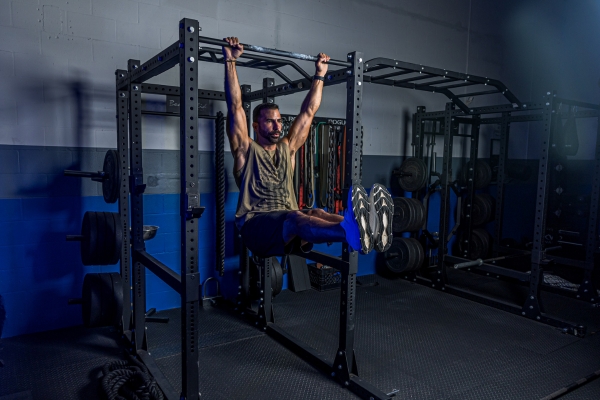
Why Bodyweight Exercises Work for Muscle Growth
You might be wondering, “How can bodyweight exercises really pack on muscle when you’re not adding any extra weight?”
The answer lies in understanding the principles that actually drive muscle growth—principles like progressive overload, mechanical tension, metabolic stress, and muscle damage.
The good news? You don’t need barbells or dumbbells to trigger them.
Progressive Overload: It’s Not Just About Adding Weight
When most people hear “progressive overload,” they think it’s all about stacking plates on the bar.
But in reality, progressive overload simply means making your muscles work harder over time.
You can do this with bodyweight exercises by increasing the difficulty, reps, or even the speed of your movements.
Think about it—moving from standard push-ups to explosive clapping push-ups or transitioning from regular squats to single-leg pistol squats is still progressive overload.
You’re demanding more from your muscles, which forces them to adapt and grow.
Mechanical Tension: Squeezing Every Rep for Growth
Mechanical tension is the cornerstone of muscle growth.
It’s the force placed on your muscles when they’re under load—whether that load comes from weights or your own body.
Exercises like pull-ups and dips, when done with controlled, full-range movements, create intense mechanical tension.
The trick is to focus on perfect form, slower negatives, and maximizing time under tension.
You’re not just moving your body; you’re making every rep count by recruiting more muscle fibers.
Metabolic Stress: That Burn You Can’t Ignore
You know that burning sensation when you push out those last few reps?
That’s metabolic stress, and it’s a key driver of hypertrophy.
Bodyweight exercises are perfect for creating this “pump” effect, especially when you string together high-rep sets or introduce intensity techniques like supersets, drop sets, and time-under-tension circuits.
The constant squeezing and pumping flood your muscles with blood and create the kind of cellular stress that leads to muscle growth.
Muscle Damage: Breaking Down to Build Back Bigger
Muscle damage might sound bad, but it’s actually the goal.
When you train, you’re causing microscopic tears in your muscle fibers.
Your body repairs those tears, making your muscles stronger and bigger in the process.
Bodyweight exercises—especially explosive moves like plyometric push-ups or jumps—can create just as much muscle damage as lifting weights, if not more, when you push them to their limits.
The Science Backs It Up
Still not convinced?
Studies have shown that bodyweight exercises can stimulate hypertrophy just as effectively as traditional weight training when volume and intensity are matched.
Studies found that exercises like push-ups and pull-ups can lead to significant increases in muscle mass when progressively overloaded. [1]
It’s not about the tool you use—it’s how you use it.
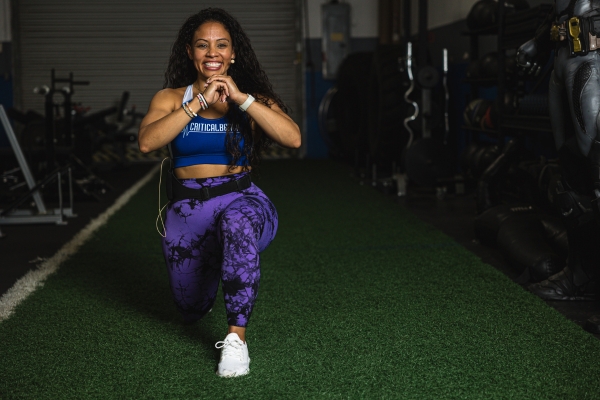
How to Ensure Progressive Overload with Bodyweight Exercises
So you know progressive overload is key to building muscle, but how do you achieve that without adding weights?
The answer lies in strategically tweaking the exercises themselves.
Let’s break down exactly how you can keep making gains with bodyweight training.
Increase Difficulty: Master Your Body with Single-Limb Exercises
One of the most effective ways to increase resistance in bodyweight training is by shifting from bilateral (using both limbs) to unilateral (single-limb) exercises.
Think about it: A standard push-up is great, but when you level up to a one-arm push-up, you’re essentially doubling the load on each side.
The same goes for squats—once you nail the basics, challenge yourself with pistol squats.
These advanced variations place far more demand on your muscles, leading to greater strength and hypertrophy.
Pro Tips:
- Start with Assisted Variations: Before jumping straight into one-arm push-ups or pistol squats, practice assisted versions (e.g., using a wall, bench, or TRX bands) to build strength and stability.
- Work on Your Weak Links: For single-limb exercises, mobility and balance are often limiting factors. Incorporate flexibility and stability drills to improve your form.
- Use Slow Negatives: Focus on slow, controlled negatives (eccentric phase) when progressing to more difficult variations. For example, lower yourself slowly in a one-arm push-up, even if you need assistance on the way up.
Manipulate Volume: More Reps, Sets, and Time Under Tension
Progressive overload isn’t just about making exercises harder—it’s also about doing more.
Increasing the number of reps and sets is a straightforward way to boost training volume, but that’s not the only option.
You can also manipulate time under tension by slowing down the eccentric (lowering) phase of each movement or adding pauses at the toughest part of the exercise.
For example, a 3-second negative on each push-up or a 2-second hold at the bottom of a squat will amplify the intensity without needing to add weight.
Pro Tips:
- Apply Tempo Training: Incorporate tempo variations like 3-0-3 (3 seconds down, no pause, 3 seconds up) or 5-1-5 to increase time under tension and recruit more muscle fibers.
- Use Volume Progressions: Instead of increasing reps arbitrarily, progress incrementally. For example, add just 1-2 reps per week until you hit your target, then advance to a more difficult variation.
- Play with Supersets and Circuits: Combine exercises into supersets or circuits to maximize metabolic stress and fatigue, forcing your muscles to work harder over a longer period.
Adjust Angles and Leverage: Work Smarter, Not Just Harder
Sometimes, small changes make the biggest difference.
By adjusting the angles and leverage in your exercises, you can dramatically increase the load on your muscles.
Take push-ups, for instance:
Regular push-ups are effective, but once you elevate your feet into a decline push-up, you shift more weight onto your chest and shoulders, making the exercise harder.
The same principle applies to rows and pull-ups—changing your body angle or grip can turn an easy move into a serious challenge.
Pro Tips:
- Use Elevation and Decline: Elevate your feet for push-ups or dips to increase the load on your upper body, or adjust the height of your hands during rows to focus more on your back.
- Play with Hand and Foot Positioning: A narrow grip push-up or squat puts more emphasis on certain muscle groups, making the exercise more demanding.
- Incorporate Angled Variations: For exercises like rows, adjusting your body angle to be more horizontal increases the resistance, making the move tougher and more effective for muscle building.

Creating an Effective Bodyweight Training Program
Ready to build muscle with nothing but your body?
The key to a successful bodyweight training program is smart programming—structuring your sets, reps, and rest times to stimulate muscle growth while balancing your workouts to hit every muscle group.
Here’s how to do it.
Programming Tips: Structure Your Workouts for Gains
To build muscle with bodyweight exercises, you need a plan that optimizes tension, volume, and recovery.
Here’s how to get it right:
Sets and Reps: For hypertrophy (muscle growth), aim for 3-4 sets of 8-15 reps per exercise. Push to near failure on every set to ensure you’re recruiting the maximum number of muscle fibers.
Rest Times: Keep rest between sets around 60-90 seconds. This strikes a balance between recovery and keeping your muscles under constant tension, which is key for growth.
Intensity Techniques: Incorporate techniques like supersets, drop sets, and tempo training (slowing down the eccentric phase) to increase the intensity without needing additional weight.
Balancing Push, Pull, and Leg Work: Full-Body Gains
One of the biggest mistakes in bodyweight training is neglecting certain muscle groups, leading to imbalances and plateaus.
Here’s how to structure your routine for complete development:
Push Exercises: Include exercises like push-ups, dips, and pike push-ups for chest, shoulders, and triceps.
Pull Exercises: Focus on pull-ups, inverted rows, and Australian pull-ups to hit your back and biceps. If you don’t have access to a bar, get creative with doorframe or towel pull-ups.
Leg Exercises: Don’t skip leg day! Incorporate squats, lunges, pistol squats, and Bulgarian split squats. These moves are essential for building a strong foundation.
Core Work: Your core is constantly engaged during bodyweight exercises, but targeted moves like hanging leg raises, hollow body holds, and plank variations will take it to the next level.
Sample Workout Plan: Your Bodyweight Training Blueprint
Here’s a week’s worth of bodyweight workouts designed for muscle growth.
This plan covers push, pull, legs, and core, while keeping the intensity high and the variety interesting.
Day 1: Push (Chest, Shoulders, Triceps)
- Push-Ups: 4 sets of 12-15 reps
- Dips (Parallel Bars or Bench): 4 sets of 10-12 reps
- Pike Push-Ups: 3 sets of 10-12 reps
- Diamond Push-Ups (Tempo: 3-0-1): 3 sets of 8-10 reps
Day 2: Pull (Back, Biceps)
- Pull-Ups (Wide Grip): 4 sets of 8-12 reps
- Inverted Rows: 4 sets of 10-15 reps
- Chin-Ups (Tempo: 3-1-1): 3 sets of 8-10 reps
- Australian Rows: 3 sets of 12-15 reps
Day 3: Legs
- Pistol Squats (Assisted if needed): 4 sets of 6-8 reps each leg
- Bulgarian Split Squats: 3 sets of 10-12 reps each leg
- Nordic Hamstring Curls: 3 sets of 8-10 reps
- Jump Squats (Explosive): 3 sets of 12-15 reps
Day 4: Core and Conditioning
- Hanging Leg Raises: 4 sets of 10-15 reps
- Hollow Body Holds: 4 sets of 20-30 seconds
- Plank with Arm Lift: 3 sets of 30-40 seconds each side
- High-Intensity Interval Circuit (Mountain Climbers, Burpees, High Knees): 3 rounds of 30 seconds on, 30 seconds off
Day 5: Total Body Burnout
- Combine a push, pull, and leg exercise for a circuit:
- Push-Ups: 3 sets of 15-20 reps
- Pull-Ups: 3 sets of 8-10 reps
- Squat Jumps: 3 sets of 15-20 reps
- Rest 60 seconds between each circuit and repeat 3-4 rounds.
Day 6: Active Recovery or Mobility Work
- Focus on stretching, foam rolling, or light cardio (walking, swimming).
Day 7: Rest
- Focus on recovery, especially providing yourself with the nutrition you need for muscle recovery.
This routine balances muscle engagement, keeps the intensity high, and gives you the variety needed to make bodyweight training both effective and fun.
Stick to it, push yourself, and watch the gains roll in.

Your Body Is the Best Gym You’ve Got
You’ve heard it all—people saying you can’t build muscle without heavy weights, that bodyweight exercises are only good for beginners or for “toning.”
But we’ve just shattered those myths.
The truth is, if you’re training smart, pushing for progressive overload, and mastering the right techniques, bodyweight exercises can be just as effective—sometimes even more so—than traditional weight training.
Think about it:
You’re not limited by access to a gym, and you can challenge your muscles in ways that even weights can’t.
Whether it’s mastering single-limb movements, dialing in your form, or using your body’s own mechanics to intensify each rep, you’ve got everything you need to keep growing.
So, here’s the challenge:
If you’ve been holding back on bodyweight training because you thought it couldn’t get you jacked, it’s time to give it the respect it deserves.
Your gains depend on it. Start integrating these principles into your routine today and see just how powerful your body can be when you push it to its limits—no excuses, no equipment required.
The only question left is: Are you ready to put in the work?

